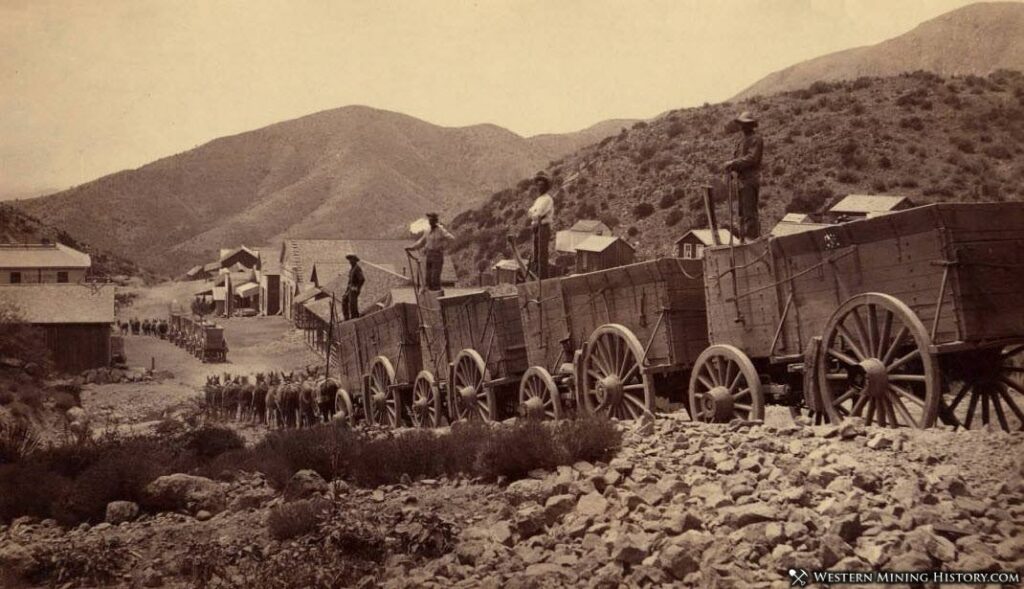Ouray County COGenWeb
COGenWeb a proud partner of USGenWeb
Mining
Heavy Freight Wagons of the American West
Twelve billion tons of freight were transported by truck in the United States last year. The skilled drivers have CB contact, radio, headphones, paved roads, power steering, sleeper cabs, and comfortable seats. Truck stops provide food, showers, and fuel.
One of the least appreciated but important jobs during the era of the western expansion was moving freight to provide everything from food to machinery, household goods, ore, and needed equipment for the rancher, miner, farmer, households, and storekeeper. Yet the "mule skinner" or "bull whacker" ranked near, if not at the bottom, on the scale of importance in stories about the old West, and even during their time they were looked down upon.

Freight wagons on Ute Pass Colorado 1878
In Colorado, especially in the rich San Juan Mining District, John Ashenfelter ran a large pack train and freighting company that supplied the towns and mining camps, and along with Dave Wood were the largest freighters into Southwestern Colorado towns and mining districts.

Ashenfelters Transportation Co. Sneffels, Colorado 1890
These are just a few of the larger freight companies. On a smaller scale were the independent and often lone teamsters who took on the contracts too small, dangerous, or remote for the larger outfits to bother with.
Mule Skinners and Bull Whackers

For a WHOLE lot more on mining in the early west, check out this website, where I grabbled some images. Great read.
This page was last updated